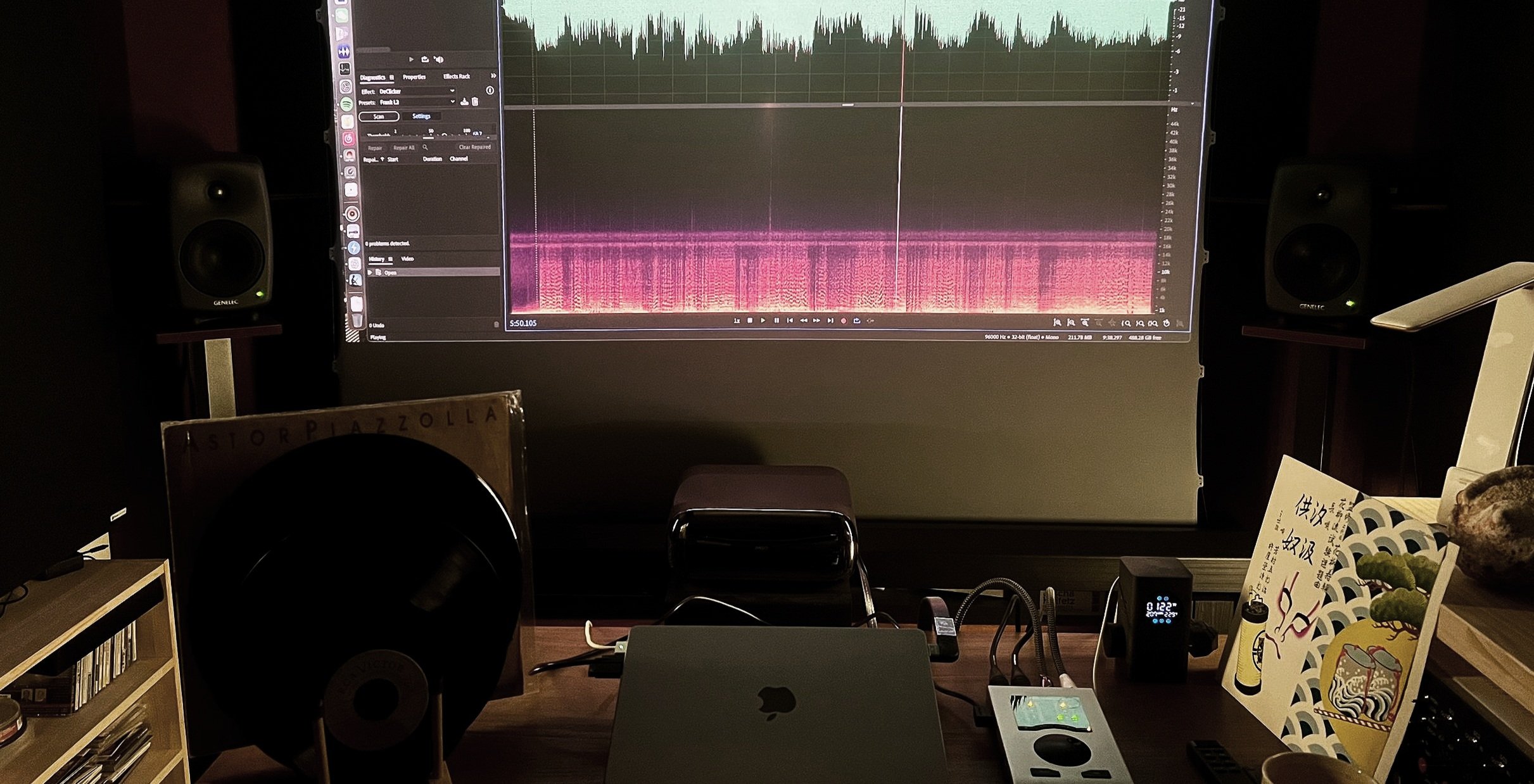
Frank Jin Studio
Frank Jin Studio is designed to offer the ultimate solution for record restoration, utilizing state-of-the-art technology while embracing cutting-edge industry concepts.
Frank Jin Studio is dedicated to the restoration and transfer of shellac, vinyl and other traditional recordings in different formats. It was officially established in 2025. As part of the mission, the studio powers the TangoSparks Project, dedicated to the finest-quality transfers of tango music.
Over the decades, conventional sound restoration has evolved into a proven and reliable methodology, with each step standing the test of time. Technically, the only remaining frontier is improving the treatment quality and applying some creativity in the post-production.
Preparation
Tagging: Records of optimal conditions receive careful labeling for clear organization.
Cleaning: For records, select the appropriate cleaning method—vacuum or ultrasonic—based on the record’s material (shellac, vinyl, or others) to ensure optimal playback quality without causing damage to the disc.
Transfer
Tuning: Due to limitations of antique recording techniques and manipulation of sound engineers, pitch is usually imprecise when played at the standard rotation speeds—a keyboard and, on rare occasions, spectrum analysis are used to determine the correct pitch. For TangoSparks, the Discology section documents the pitch reference of major orquestas based on personal study and various sources.
De-emphasize: Almost all 78-rpm records and pre-1956 vinyls were pre-emphasized with non-RIAA curves. Therefore, a custom-made pre-amplifier capable of generating specific de-emphasis curves as records require in the transferring stage is crucial. This process requires a calibrated (powered by DiracLive) acoustic environment, and correct curves will thus be selected.
Digitalization: The record is transferred at the correct pitch and with the proper de-emphasis curve. A laser turntable with an objective frequency response faithfully and wearlessly captures the analog information in the grooves. Traditional turntables are used in special cases. This process also involves intricate L/R groove wall selection or signal blending in varying proportions.
Post-Production
Editing: all de-clicking, de-humming, de-thumping and pitch drifting are handled conservatively to preserve and restore the original information, when the problems cannot be solved within the analog domain. De-noise and (de-)reverb are rarely applied. Subtle EQ shaping may be applied if needed.
Mastering: Final fine-tuning of balance and dynamics before outputting formats in demand.
Review: Careful evaluation across different playback scenarios.
While not part of the standard workflow, we acknowledge the transformative impact of AI in audio restoration and apply it selectively when beneficial.
Samples
Flat (phono) and RIAA (line) out versions provided for comparison.
Title: Two Dreams Got TogetherArtist: Glen GrayDisc Number: DECCA 1607Matrix Number: 62882Disc Format: 78rpm shellac 10"Rec. Date: 1937.12.14Title: VocaliseArtist: Jascha HeifetzDisc Number: Victor ERA-94Matrix Number: E2LW-1080Disc Format: 45rpm vinyl 7"Rec. Date: 1947.12.18Title: N.N.Artist: Osvaldo PuglieseDisc Number: Angel OW-1005Matrix Number: LD-35015Disc Format: 33rpm vinyl 10"Rec. Date: 1952.11.13- For business or collaboration, contact frank@tangosparks.com








